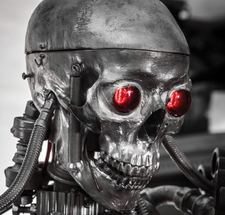Video surveillance with the Raspberry Pi
Eye in the Pi

© Lead Image © svedoliver, 123RF.com
Set up a professional video surveillance system armed with motionEyeOS and a Raspberry Pi.
Theft, vandalism, and property damage are commonplace occurrences today. Police investigations into such cases often come up empty, and the culprits escape undetected and unpunished. As a result, sales of video surveillance systems consisting of several cameras and a video recorder are booming. Here, I show you how, armed with just a Raspberry Pi and motionEyeOS, you can catch the culprits in the act.
Thanks to inexpensive IP and USB cameras, you can find numerous software packages for the home that can be used to upcycle a computer into a full-fledged video surveillance system. However, these solutions all have a serious disadvantage: They have to run constantly and require a correspondingly large amount of energy.
Professional surveillance cameras are bulky and usually attached by a cable to a control unit; just cutting the data cable will disable the camera. Video surveillance with the Raspberry Pi and the motionEyeOS [1] free operating system, on the other hand, is simple, less conspicuous, and less expensive.
[...]
Buy this article as PDF
(incl. VAT)
Buy Linux Magazine
Subscribe to our Linux Newsletters
Find Linux and Open Source Jobs
Subscribe to our ADMIN Newsletters
Support Our Work
Linux Magazine content is made possible with support from readers like you. Please consider contributing when you’ve found an article to be beneficial.

News
-
Another Linux Malware Discovered
Russian hackers use Hyper-V to hide malware within Linux virtual machines.
-
TUXEDO Computers Announces a New InfinityBook
TUXEDO Computers is at it again with a new InfinityBook that will meet your professional and gaming needs.
-
SUSE Dives into the Agentic AI Pool
SUSE becomes the first open source company to adopt agentic AI with SUSE Enterprise Linux 16.
-
Linux Now Runs Most Windows Games
The latest data shows that nearly 90 percent of Windows games can be played on Linux.
-
Fedora 43 Has Finally Landed
The Fedora Linux developers have announced their latest release, Fedora 43.
-
KDE Unleashes Plasma 6.5
The Plasma 6.5 desktop environment is now available with new features, improvements, and the usual bug fixes.
-
Xubuntu Site Possibly Hacked
It appears that the Xubuntu site was hacked and briefly served up a malicious ZIP file from its download page.
-
LMDE 7 Now Available
Linux Mint Debian Edition, version 7, has been officially released and is based on upstream Debian.
-
Linux Kernel 6.16 Reaches EOL
Linux kernel 6.16 has reached its end of life, which means you'll need to upgrade to the next stable release, Linux kernel 6.17.
-
Amazon Ditches Android for a Linux-Based OS
Amazon has migrated from Android to the Linux-based Vega OS for its Fire TV.

